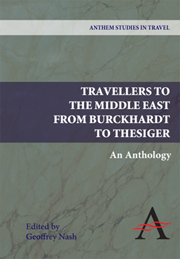Book contents
- Frontmatter
- Contents
- Acknowledgements
- Introduction
- PART ONE THE COMING OF EMPIRE 1800–1879
- PART TWO COLONIALISM AND RESISTANCE 1880–1950
- Ottoman and Former Ottoman Territories
- Arabia
- Persia/Iran
- 1 Persia and the Persian Question
- 2 A Year Amongst the Persians
- 3 Persian Letters
- 4 The Middle East Question
- 5 The Road to Oxiana
- 6 The Cruel Way
- Bibliography
3 - Persian Letters
from Persia/Iran
Published online by Cambridge University Press: 05 March 2012
- Frontmatter
- Contents
- Acknowledgements
- Introduction
- PART ONE THE COMING OF EMPIRE 1800–1879
- PART TWO COLONIALISM AND RESISTANCE 1880–1950
- Ottoman and Former Ottoman Territories
- Arabia
- Persia/Iran
- 1 Persia and the Persian Question
- 2 A Year Amongst the Persians
- 3 Persian Letters
- 4 The Middle East Question
- 5 The Road to Oxiana
- 6 The Cruel Way
- Bibliography
Summary
Bell was the only daughter of a wealthy Durham industrialist upon whose death in 1904 she inherited a fortune. Encouraged by her family – both her father and stepmother (her mother had died when she was three) understood well her precocious talents – in 1888 she became the first woman to take a first in Modern History at Oxford. Family connections also opened doors in her ensuing career in the Middle East. After travelling in Persia she took up climbing in the Alps. More journeys followed: in the cause of archaeology she visited Asia Minor, while Syria provided her with opportunities to demonstrate her mastery of Arabic and to start accumulating knowledge of the different tribes and clans. From the travels emerged more writing – including The Desert and the Sown (1907), The Thousand and One Churches (1909), and Amurath to Amaruth (1911). Acutely aware of the hierarchies of the desert and enabled by the power brought by prodigious intellect, Bell revelled in the freedom from English social restraint such travel brought her. When the Great War began she enlisted in the Cairo Arab Bureau and took her place among the Arabic scholars working for British interests in the Middle East. After the war she became political advisor to Faysal in Iraq, and founder director of the National Museum in Baghdad. Unhappy in her personal life she died in Iraq in 1926 from an overdose.
- Type
- Chapter
- Information
- Travellers to the Middle EastAn Anthology, pp. 269 - 274Publisher: Anthem PressPrint publication year: 2009



